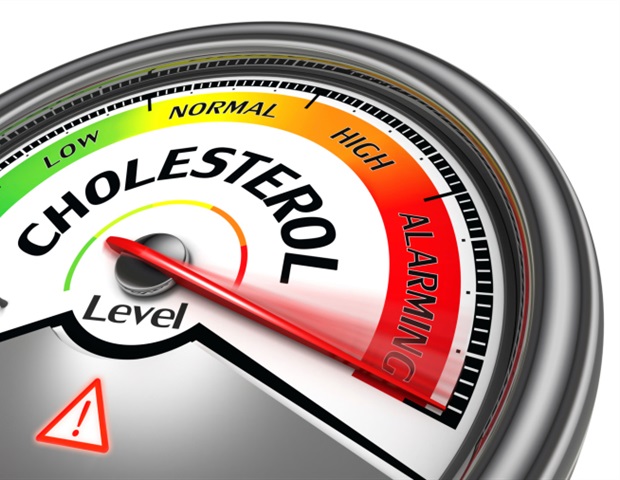A protein in soybeans blocks the manufacturing of a liver enzyme concerned within the metabolism of triglycerides and low-density lipoprotein, scientists present in a contemporary learn about.
Eating soy flour wealthy within the protein B-conglycinin has the possible to cut back LDL levels of cholesterol and decrease the danger of metabolic illnesses corresponding to atherosclerosis and fatty liver illness.”
Elvira de Mejia, professor of meals science and human vitamin on the College of Illinois Urbana-Champaign and the corresponding writer of the learn about
Revealed within the magazine Antioxidants, the learn about used to be co-written by means of Neal A. Bringe, a meals scientist with Benson Hill Corporate; and Miguel Rebollo Hernanz, who on the time of the analysis used to be a visiting pupil on the U. of I. Rebollo Hernanz is the primary writer of the paper.
Scientists have lengthy recognized of soybeans’ cholesterol-lowering homes and lipid-regulating results, and the present mission investigated two soy proteins regarded as answerable for those results – glycinin and B-conglycinin – and located the latter to be specifically vital.
“As we hypothesized, soybeans’ results on ldl cholesterol metabolism don’t seem to be most effective related to their protein concentrations and composition but additionally with the peptides embedded in them which can be launched right through gastrointestinal digestion,” de Mejia mentioned.
The workforce defatted and floor into flour 19 soybean sorts, every of which contained differing proportions of the 2 proteins. The percentage of glycinin in those sorts ranged from 22%-60% whilst the B-conglycinin ratio ranged from 22%-52%.
The use of a simulation of the human digestive procedure validated by means of different research, the workforce sequentially combined the defatted soybean flours with more than a few fluids and enzymes to imitate the oral, gastric, intestinal and colonic stages of digestion, de Mejia mentioned.
They known 13 bioactive peptides produced right through digestion, maximum of which got here from glycinin and B-conglycinin, in line with the learn about.
In checking out the digested fabrics’ capability to inhibit the process of HMGCR, a protein that controls the velocity of ldl cholesterol synthesis, the researchers discovered that their inhibitory homes had been 2-to-7 instances much less potent than simvastatin, a well-liked drug used to regard excessive LDL ldl cholesterol and fats phases within the blood that used to be used as a regulate within the learn about.
After classifying the soybean sorts by means of their glycinin and B-conglycinin composition and their HMGCR inhibitory homes, the workforce decided on 5 sorts for additional research.
“We began with cells that had been already uncovered to fatty acids to imitate fatty liver illness and attempted to grasp the function of the digested soy proteins,” de Mejia mentioned.
“We measured a number of parameters related to ldl cholesterol and lipid metabolism and more than a few different markers – proteins and enzymes – that undoubtedly or negatively have an effect on lipid metabolism.”
Those markers integrated HMGCR and angiopoietin-like 3, a protein secreted essentially by means of the liver that may be a essential modulator of lipid metabolism, de Mejia mentioned.
ANGPTL3 inhibits the enzymes concerned within the metabolism of triglycerides, LDL ldl cholesterol and high-density lipoprotein ldl cholesterol, which is often referred to as “just right ldl cholesterol” against this to LDL’s popularity as “unhealthy ldl cholesterol.” Each HMGCR and ANGPTL3 are overexpressed in fatty liver illness, in line with the learn about.
Secretion of ANGPTL3 greater than tripled after the liver cells had been uncovered to the fatty acids, de Mejia mentioned. On the other hand, the workforce discovered that peptides from 3 of the digested soybean sorts diminished ANGPTL3 secretion by means of 41%-81% in correlation with their glycinin and B-conglycinin ratios.
Even supposing the fatty acids diminished the liver cells’ absorption of LDL ldl cholesterol by means of greater than one-third, the soybean digests reversed this by means of inhibiting the expression of a protein. The digests higher the cells’ uptake of LDL by means of 25%-92%, relying at the soybean selection and its glycinin and B-conglycinin proportions.
“One of the crucial key chance components of atherosclerosis is oxidized LDL ldl cholesterol; subsequently, we investigated the preventive results of the soybean digests at 8 other concentrations,” de Mejia mentioned. “Every of them diminished the LDL oxidation charge in a dose-dependent approach, inhibiting the formation of each early and overdue oxidation merchandise related to the illness.”
Higher concentrations of B-conglycinin within the digests correlated with higher discounts in oxidized LDL, esterified ldl cholesterol, triglycerides and HMGCR phases in plasma, the workforce discovered.
“The digested soybeans’ peptides had been in a position to cut back lipid accumulation by means of 50%-70%, and that is the reason essential,” de Mejia mentioned. “That used to be similar to the statin, which diminished it by means of 60%. We additionally obviously noticed other markers that had been influenced by means of key enzymes that keep watch over hepatic lipogenesis – the improvement of a fatty liver.”
ANGPTL3 is a very powerful marker, since its circulating phases are related to somewhat excessive hepatic impairment and irritation, de Mejia mentioned. “Our function as meals scientists is to search out bioactive compounds that might keep watch over this in plasma. It is simple to measure to forestall hyperlipidemia and atherosclerosis.”
The workforce’s present analysis, led by means of postdoctoral researcher Erick Damian Castañeda-Reyes and doctoral pupil Jennifer Kusumah, compares the anti inflammatory capability of decided on soybean sorts in accordance with their protein composition.
The analysis used to be supported by means of the Agricultural Analysis Provider within the U.S. Division of Agriculture.
Supply:
Magazine reference:
Rebollo-Hernanz, M., et al. (2022) Decided on Soybean Types Control Hepatic LDL-Ldl cholesterol Homeostasis Relying on Their Glycinin:β-Conglycinin Ratio. Antioxidants. doi.org/10.3390/antiox12010020.
Supply Through https://www.news-medical.web/information/20230123/Eating-soy-flour-rich-in-protein-B-conglycinin-could-reduce-LDL-cholesterol-levels.aspx




